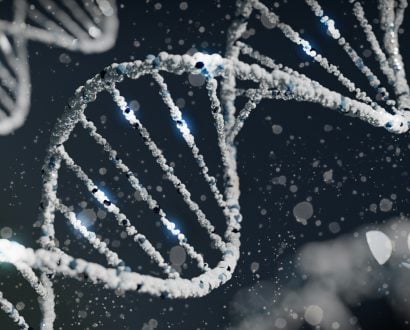ANDE: Rapid DNA – It’s a thing

In 1988, in Leicestershire, England, Colin Pitchfork was convicted of raping and murdering two 15-year-olds. This was the first case where DNA identification was used to identify the culprit.
Pitchfork avoided early identification and a person with intellectual disabilities wrongly confessed to the crime. Investigators doubted his guilt and kept searching. Ultimately, Pitchfork’s involvement was confirmed based on DNA. He was convicted and sentenced to prison, and the wrongful confessor was exonerated.
DNA is now the gold standard for human identification. It is used daily throughout the world to solve crimes and free the innocent. The bad news is that crime laboratories are understaffed and underequipped.
A single case may take anywhere from eight months to two years to process simple DNA evidence. The application of DNA is powerful in the investigation of crimes, but old infrastructure and 30-year-old processes have crippled its use. Rapid DNA fixes this problem.
As the famous legal maxim says, once cited by Martin Luther King: "Justice delayed is justice denied." Processing delays translate today to several hundred thousand sex assault evidence kits sitting on shelves with no one pursuing the guilty. The backlogs and delays are so common that most cases, other than murders or sex assaults, are not even considered for DNA evidence processing.
Many technological breakthroughs come as a result of war. Examples include penicillin, blood transfusions, jet aircraft, computers, microwaves and radar, to name a few. Such was the case with Rapid DNA.
Development was underwritten by the United States Department of Defense. The technology first arrived on the battlefield in the ‘fight against terror’ in 2014, and it has proven scientifically rock solid. It provides a huge tactical advantage due to portability, ease of use and immediate actionable answers.
It is not only powerful for prosecutions – no other technology has led to as many exonerations as DNA. Here are some of the primary Rapid DNA applications.
Disasters
Rapid DNA is used today for disastrous wildfires, including California’s 2018 Camp Fire, which was the most deadly and destructive wildfire in the state’s history – killing 85 people and causing an estimated US$16.5 billion in damage.
Historically, many wildfire victims were never identified. In rare cases, years later, a limited number of fire or wartime victims’ remains have been historically matched for human identification. With the advent of Rapid DNA, specifically due to its high performance, nearly all the victims of the Camp Fire were identified in a matter of weeks, some within days.
Unfortunately, the process was needed again in the 2023 Maui wildfires (approximately 102 victims) and the 2024 Valparaiso region wildfires in Chile (approximately 131 victims).
Rapid DNA is capable of analyzing human remains, usually ashes and bone fragments, exposed to heat as high as 1,700 degrees Fahrenheit (927 degrees Celsius), and providing solid human identification for match to next-of-kin or reference samples, such as a toothbrush.
Rapid DNA is heavily used in war zones, providing evidence of war crimes such as mass graves and missile strikes on children’s hospitals. The productivity of Rapid DNA in these situations has proven to be 10 times or more efficient than old brick and mortar laboratories.
Murders
Rapid DNA has been used in many homicide cases. It can frequently accelerate the investigation by allowing law enforcement to focus on the most appropriate suspects. Results can be dramatic because suspects have less time to formulate alibis, eliminate evidence or influence witnesses.
Investigators using Rapid DNA technology at the crime scene can frequently confront suspects with evidence that will trigger either a confession or show flaws in their explanations, which ultimately leads to confessions or the preservation of solid evidence for trial.
Sexual Assaults
In Kentucky, before the statewide deployment of Rapid DNA, the average time to process a Sex Assault evidence kit was 282 days. With the deployment of Rapid DNA, the time to process has dropped to just three days.
Energy
More than 50 percent of all oil spills in the world are attributable to microbial induced corrosion. Using old technology, there are only tests for about 10 percent of the problematic microbes, which create sulfuric acid and cause failures in pipes and tanks.
The old tests can take as long as 30 days to complete. With the advent of Rapid DNA, these tests cover the microbes of concern and can be completed on-site in under two hours.
Clinical
Probably the greatest potential impact of Rapid DNA lies in recent developments using this technology for advanced human pathogen testing. Current real-time polymerase chain reaction tests (qPCR), as used in the recent COVID-19 pandemic, are not reliable tests.
They only target one or two specific pathogens. They are prone to failure due to lack of sensitivity, simplistic targeting, pathogen mutation and sample degradation because they cannot be used at the point of need.
Broad industry studies have shown they deliver 20–40 percent false negative results. You can’t stop disease spread if you miss 20–40 percent of all cases of infection.
New Rapid DNA tests now available can handle dozens of targets in a single test with high accuracy and dramatically improved sensitivity. Rapid DNA outperforms sequencing and qPCR in virtually every way – accuracy, extensive detailed reporting, speed, labor, cost.
During a criminal investigation, the lead detective confronted the suspect with Rapid DNA evidence. The evidence was particularly damning to his claims of innocence. His reply: "I didn’t think Rapid DNA was a thing."
The investigator replied, "It’s a thing. Look it up on the internet." He subsequently confessed and provided additional details confirming his guilt in the crime.
Turns out, it is a thing.